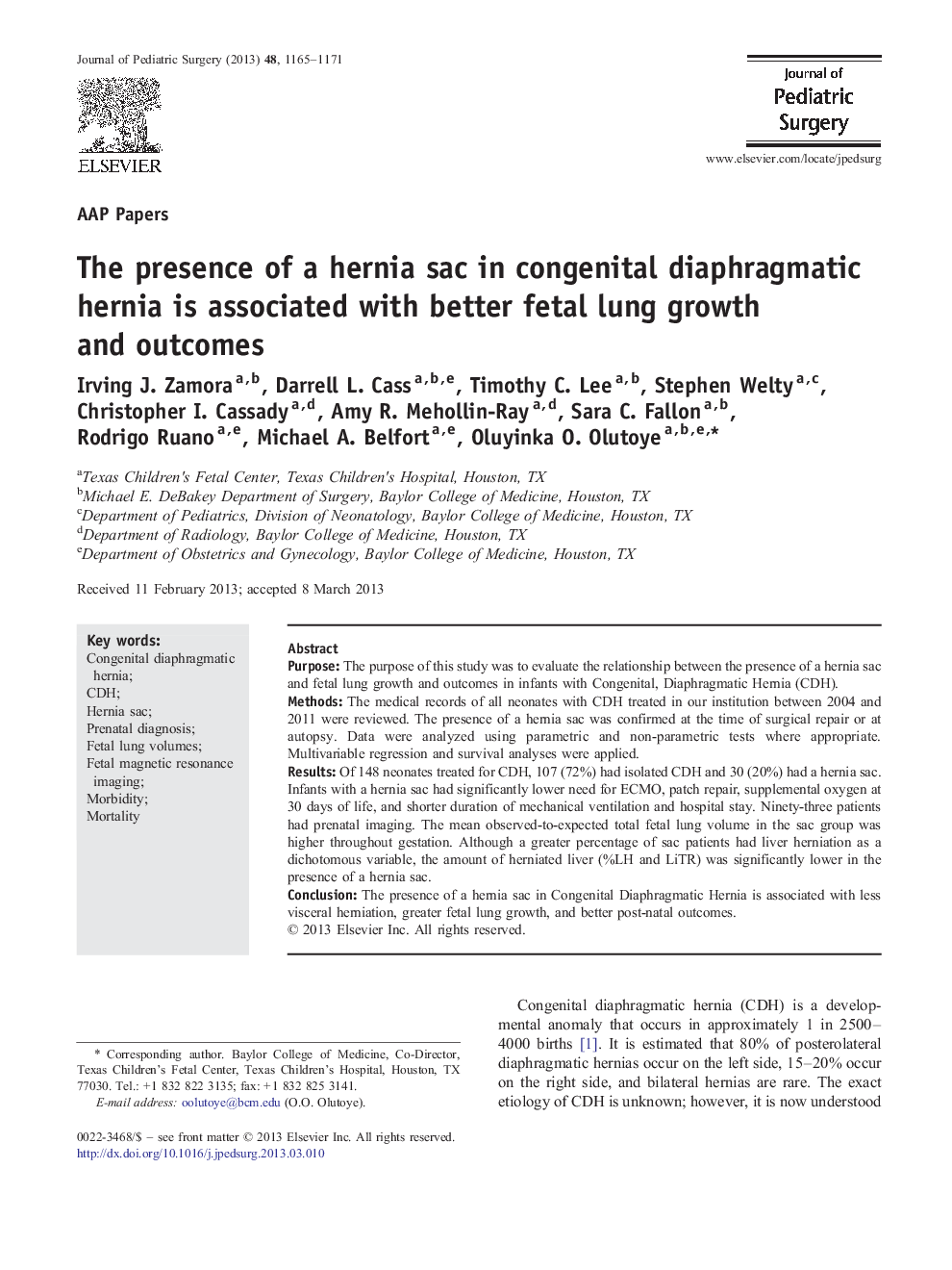| Article ID | Journal | Published Year | Pages | File Type |
|---|---|---|---|---|
| 4155986 | Journal of Pediatric Surgery | 2013 | 7 Pages |
PurposeThe purpose of this study was to evaluate the relationship between the presence of a hernia sac and fetal lung growth and outcomes in infants with Congenital, Diaphragmatic Hernia (CDH).MethodsThe medical records of all neonates with CDH treated in our institution between 2004 and 2011 were reviewed. The presence of a hernia sac was confirmed at the time of surgical repair or at autopsy. Data were analyzed using parametric and non-parametric tests where appropriate. Multivariable regression and survival analyses were applied.ResultsOf 148 neonates treated for CDH, 107 (72%) had isolated CDH and 30 (20%) had a hernia sac. Infants with a hernia sac had significantly lower need for ECMO, patch repair, supplemental oxygen at 30 days of life, and shorter duration of mechanical ventilation and hospital stay. Ninety-three patients had prenatal imaging. The mean observed-to-expected total fetal lung volume in the sac group was higher throughout gestation. Although a greater percentage of sac patients had liver herniation as a dichotomous variable, the amount of herniated liver (%LH and LiTR) was significantly lower in the presence of a hernia sac.ConclusionThe presence of a hernia sac in Congenital Diaphragmatic Hernia is associated with less visceral herniation, greater fetal lung growth, and better post-natal outcomes.
